Here’s what we learnt from a caviar masterclass at Taylor’s Culinary Institute, with the guidance of T’lur Tropical Caviar’s chief marketing officer, Shaun Simon.
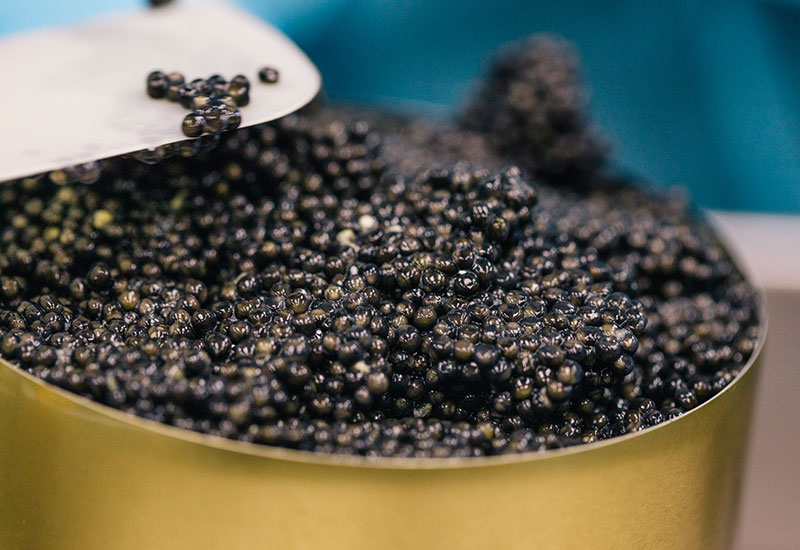
There are but few foods in the world that are instantaneously associated with luxury. Caviar is not among the least of them, prized by chefs and fans of haute cuisine the world over.
While Malaysia’s fine dining patrons are likely to have tasted of these decadent, silky pearls, not all can honestly say they know much about the delicacy. Why, even some local chefs may be lost on the subject, considering that caviar and sturgeon farming aren’t typically part of the syllabus in culinary schools.
With the hopes of changing that, Taylor’s University recently conducted a caviar masterclass in partnership with T’lur Tropical Caviar, the pioneer of homegrown tropical caviar, to celebrate the launch of Taylor’s Culinary Institute.
We were among the lucky individuals to attend the masterclass and witness the caviar production process firsthand. Here’s everything we learnt from the experience, with the guidance of T’lur Tropical Caviar’s chief marketing officer, Shaun Simon.

What is caviar?
Caviar is unfertilised fish eggs, also known as fish roe, that is harvested from sturgeon fish. Though traditionally obtained from wild sturgeon caught in the Caspian Sea and Black Sea, caviar farming has grown tremendously over the years to meet high consumer demand and avoid overfishing in their natural habitats.
How is caviar farmed?
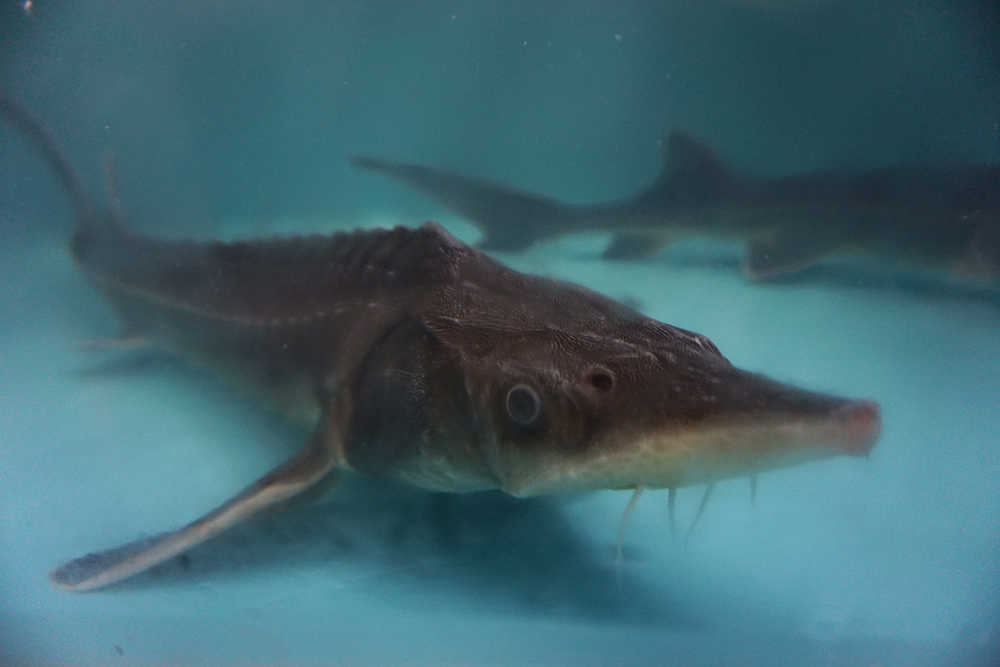
Various factors come into play when it comes to caviar farming, such as the living conditions and lifespan of sturgeons as well as the method of extraction – all of which are interdependent.
Contrary to what people may expect, Shaun suggests that euthanising the sturgeon before extraction may be more sustainable than the no-kill method.
“For one, we want the meat, and secondly, we don’t want to run the risk of disease,” Shaun said. “When you induce birth in sturgeons, you run the risk of disease or the fact that they become weak after they lay out all the eggs and then when you put them back with the group, it can affect the rest of the fishes.”
“The third reason is that it can populate very fast. Something that takes eight years everywhere else in the world, takes us four because of our weather. All we had to do was teach the fishes how to survive in our climate,” he elaborated.
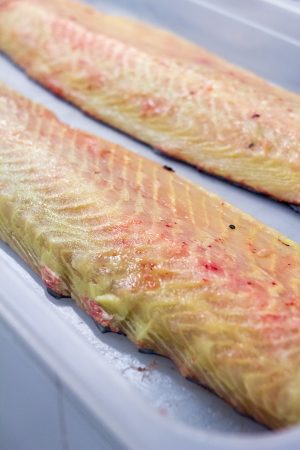
Whilst sturgeons are typically known to live in lower temperatures of between 10 to 17 degrees Celcius, T’lur manages to breed them at 26 degrees – sans climate control. This never-before-seen feat was accomplished thanks to an exposure plan that allowed the sturgeons to gradually acclimatise to the natural temperature of the waters in the T’Lur farm in Tanjung Malim, Perak.
“What sturgeons really need is good living conditions and we provide it here with really clean water. Our water is drawn straight from the mountains of Tanjung Malim and the salinity is exceptional,” he revealed, before adding good-humouredly, “there’s a reason why people say Ipoh girls have really nice skin.”
Aside from that, T’lur uses cement ponds instead of mud ponds to prevent the sturgeons, which are naturally bottom-feeders, from feeding on stones and damaging their organs.
“Whatever we’re doing here is completely different from what other farms are doing. That’s why we always call it tropical caviar because the steps and methods that we’re doing here cannot apply to whatever anyone else is doing in the world,” he emphasised.
What are the types of caviar?
There are several species of sturgeons known today, and each produces different grades and sizes of caviar. T’lur currently farms 7 different species, namely Beluga, Kaluga, Amur, Osetra, Siberia, Hybrid and Paddlefish.
“Species breeding exists because each species lays a different size of eggs. If you nurture them well, they will produce bigger and better eggs,” Shaun said. “So even if it’s a lower grade sturgeon, sometimes the egg size can actually push the quality up higher and increase the value or worth of the eggs.”
Beluga is widely regarded as the best quality caviar because of its large size and rich, nutty flavor. Kaluga caviar is a close match to the Beluga and is known to have a light, buttery taste. Russian caviar, also known as Osetra, is slightly smaller and brown to golden in colour.
How is caviar produced?
One of the reasons why caviar is sold as a luxury item is due to the tedious, manual process of extracting caviar from a sturgeon – no-kill method or otherwise. Shaun added: “You have to harvest the eggs within 15 minutes after euthanising the fish to improve shelf life and reduce exposure to air and bacteria [which can affect the integrity of the caviar].”
Step 1: Euthanisation: The sturgeon is euthanised by cutting the throat and de-blooding it. (“No blood should be in there, otherwise the blood messes up the eggs and when you take out a bloody sac, you’ll have a lot of damage to the eggs.”)
Step 2: Extraction: This step is a two-man job, where one makes an incision from the anus of the fish all the way through its belly while the other extracts the sac.
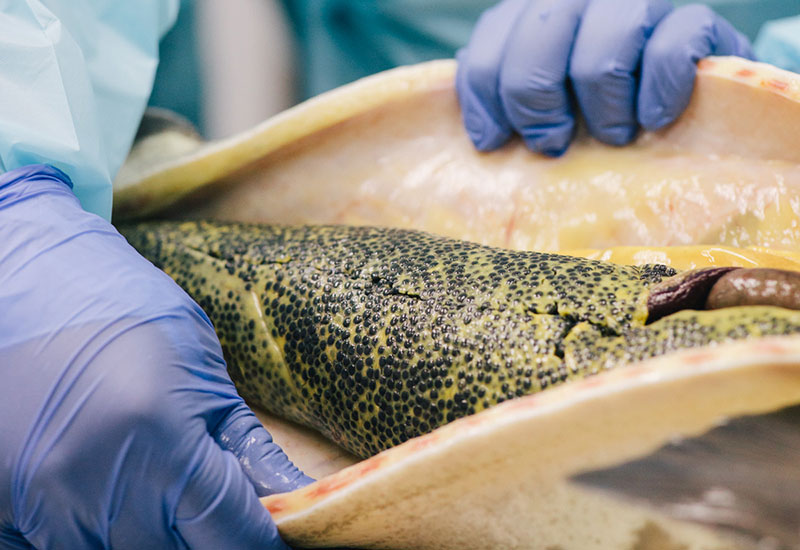
Step 3: Separation: Next, the ovaries are scrubbed gently against a net or sieve until the eggs fall through and separate from the fats and membrane, which are also kept for other uses such as to make cooking oil and supplements.
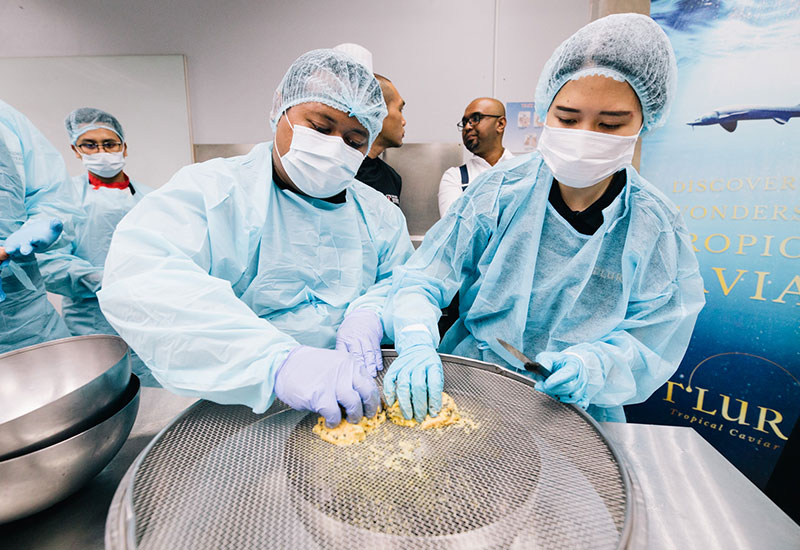
Step 4: Cleaning and picking: The eggs are then rinsed (“exactly the same way we wash rice”) until the water becomes clear before moving on to picking. Arguably the most painstaking part of the process, picking involves removing tiny white blemishes and fats with a tweezer until the batch is as spotless as can be.
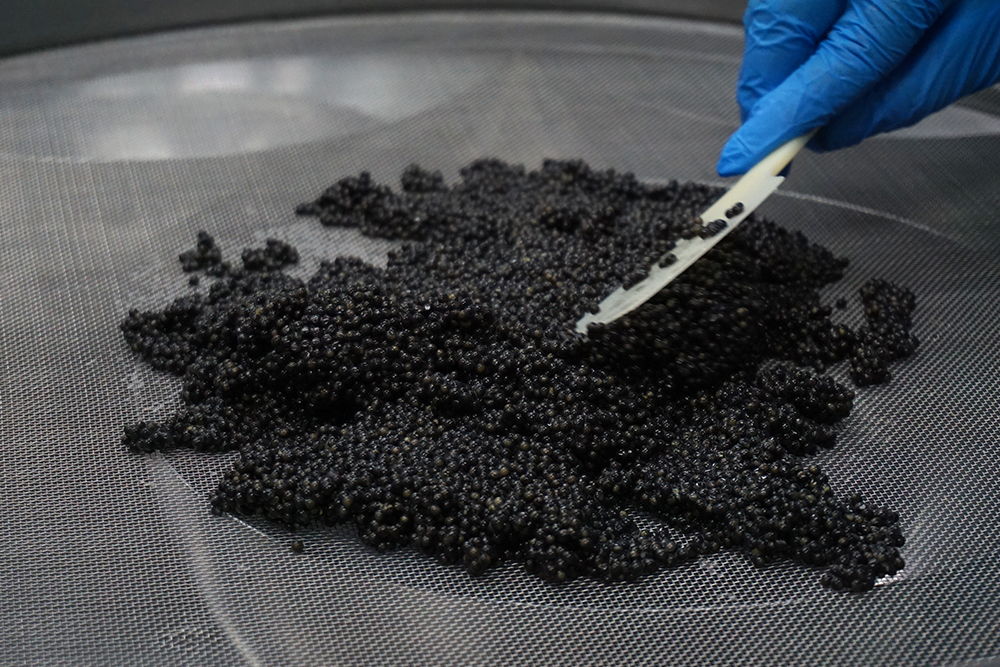
Step 5: Salting: Different farms practice different salting processes, but the “malossol” guideline (translated from Russian as “little salt”) of below 5 percent – enough to preserve it without affecting the caviar’s natural flavours – is commonly observed.
“In fact, our farm follows a rule where we can never go above 3.5% salt – if you go above that, I guarantee you, you will taste more salt than you taste caviar even though it may preserve the eggs better,” Shaun claims.
Step 6: Packaging: Finally, the caviar is carefully scooped into a metal tin and pressed gently to compress it and expel air. The final product is aged for a period of time – not more than two weeks at T’lur – before it is shipped out.
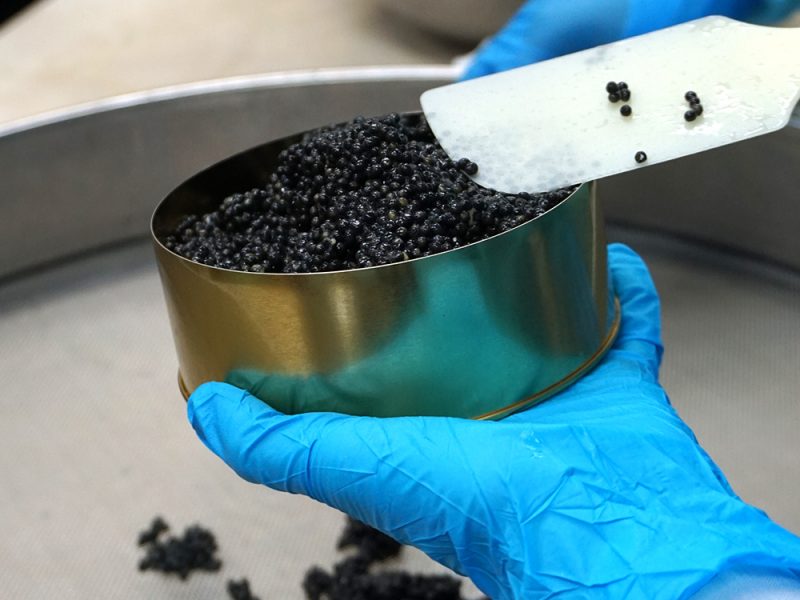
Why is caviar so expensive?
Besides the meticulous extraction process, caviar is sold at a steep price due to the time it takes for sturgeons to reach maturity (see “how is caviar farmed?” above).
According to Shaun, its value is priced as high as RM125,000 per kg. The market price for a minimum serving of 30g T’lur Caviar costs approximately RM800.
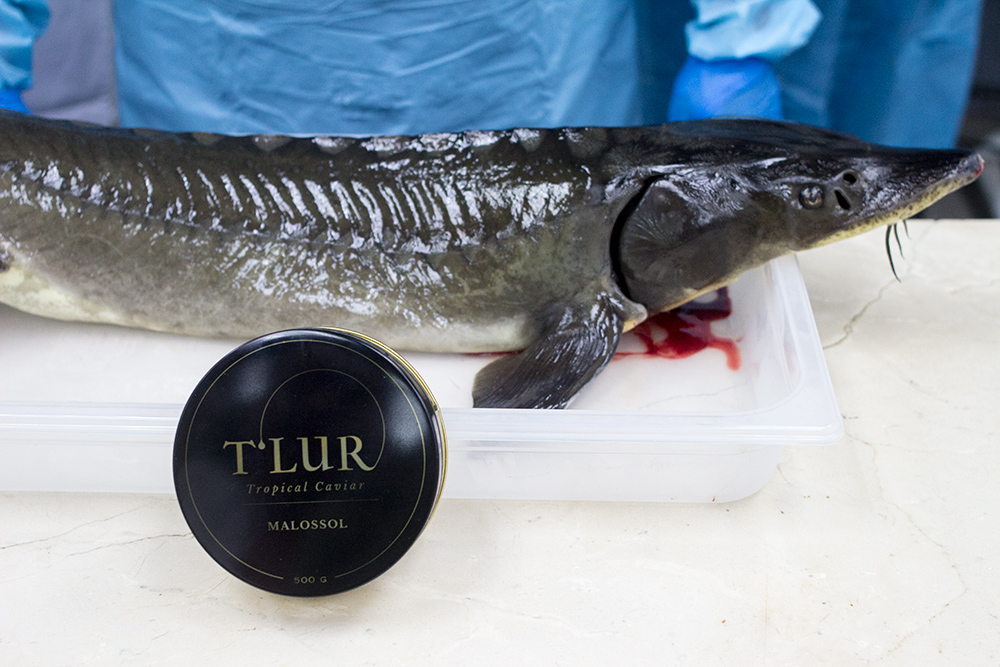
This caviar masterclass was part of a list of ongoing programmes and events at the newly launched Taylor’s Culinary Institute. For more information, log on to Taylor’s official website here.
Learn more about T’lur Tropical Caviar on the official website here.
Photography: Anson Siau (unless otherwise stated)










